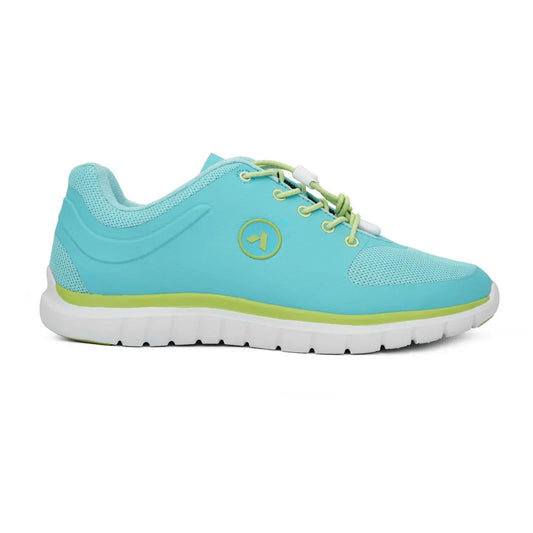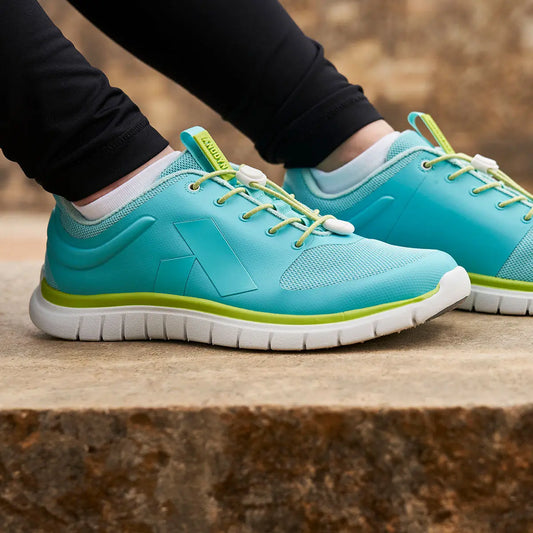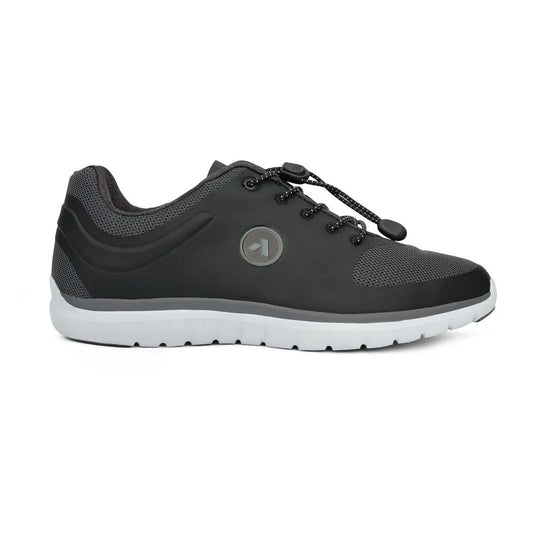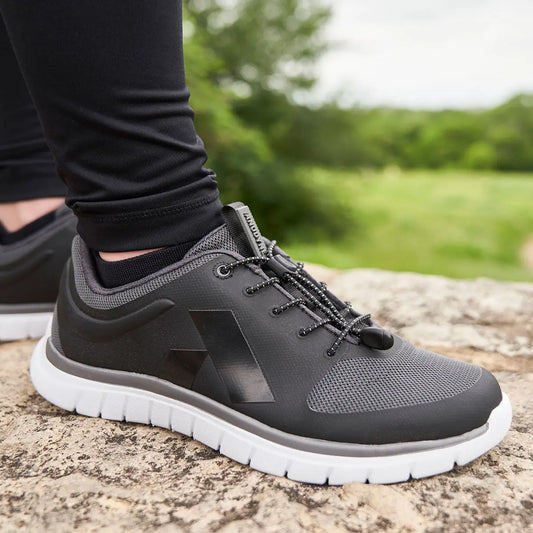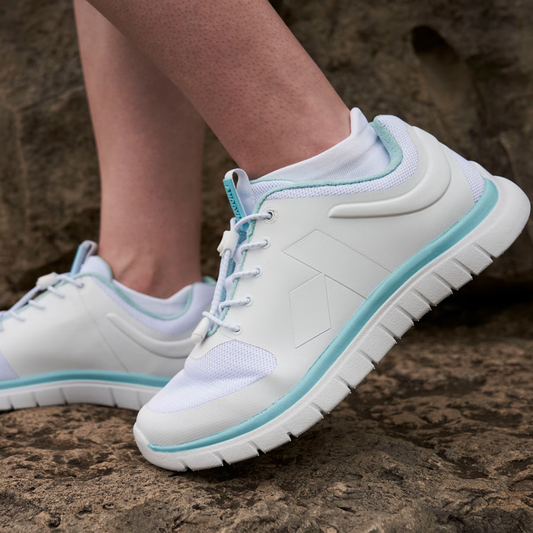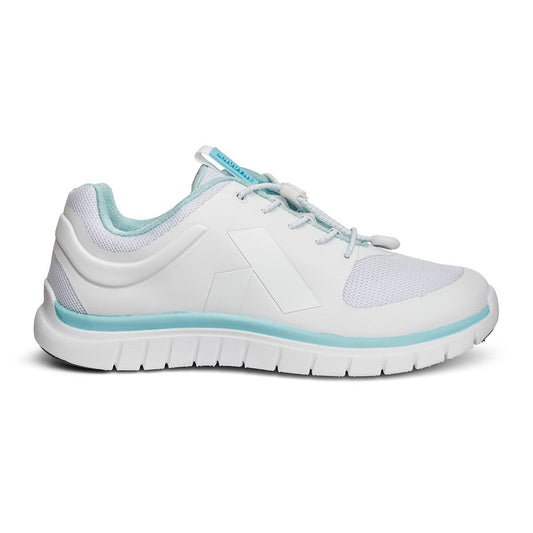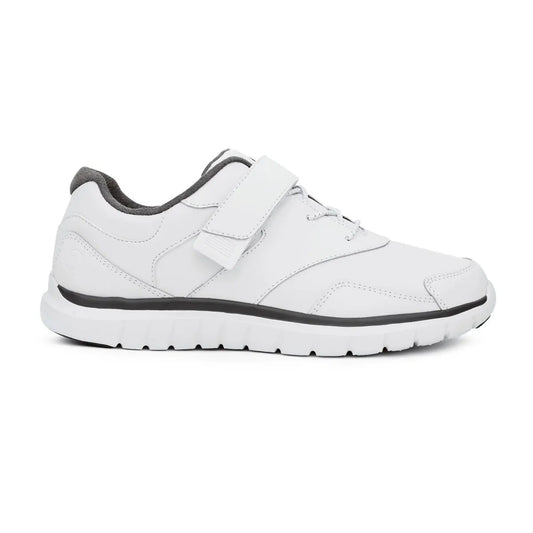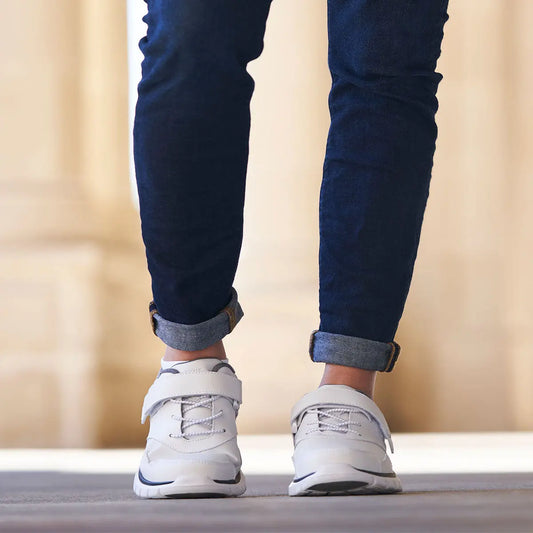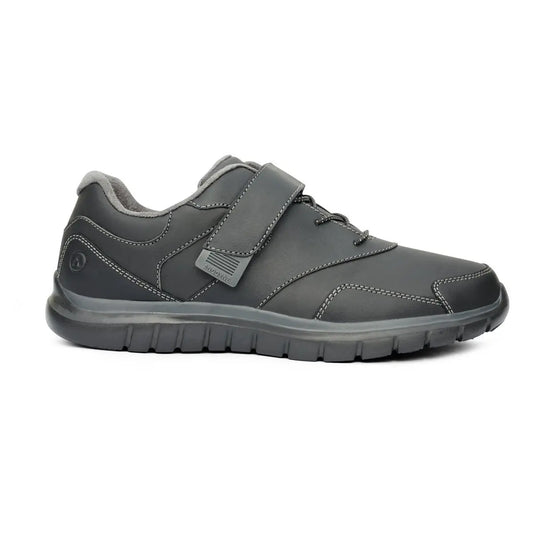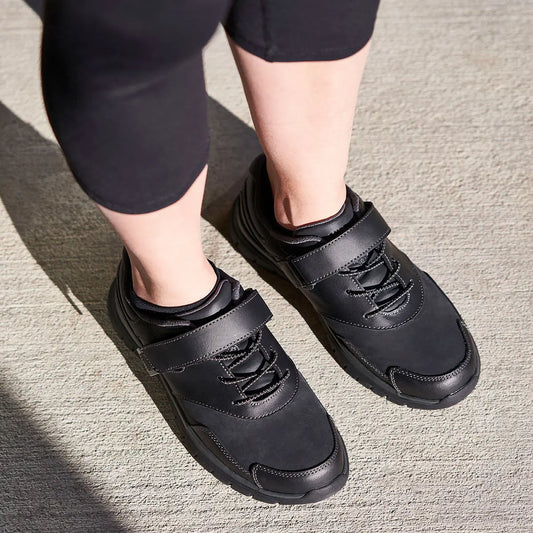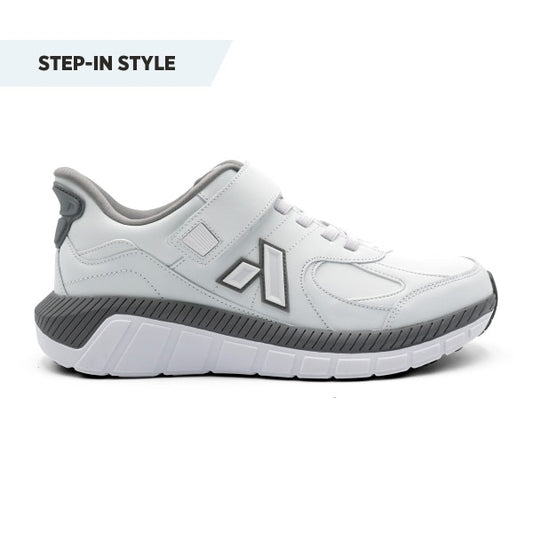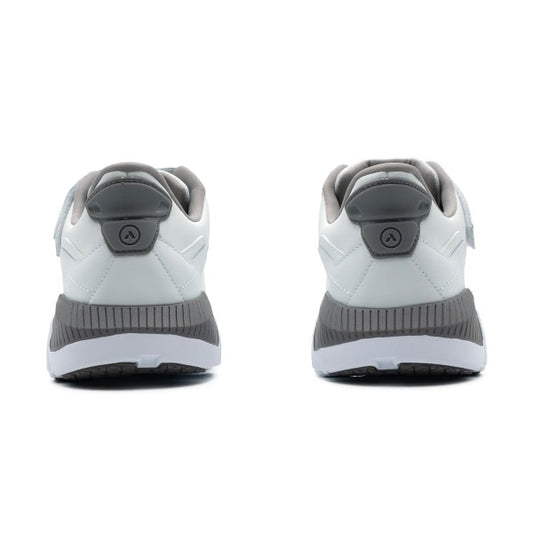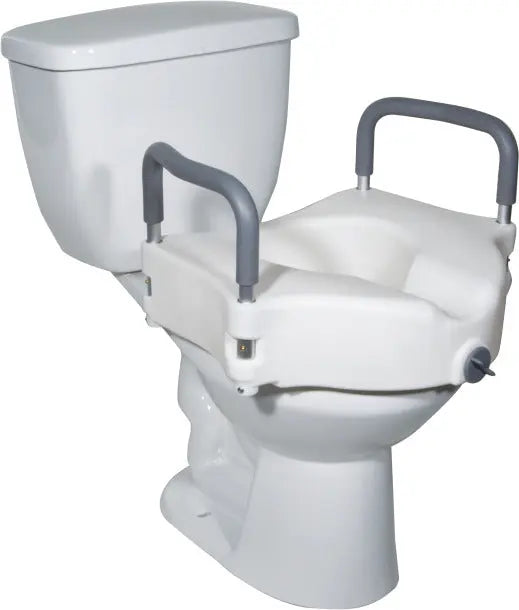- If between sizes, Anodyne recommends rounding down to the nearest ½ size.
- If between widths, Anodyne recommends rounding down to the narrower width.
No. 56 Trail Boot
Shoe Information
Manufature:
Anodyne
Style:
Men's Trail Boot
Width:
Medium, Wide, Extra Wide
Sizes:
7.5 - 12,13,14
Colors:
Oil Black & Whiskey
Upper:
Oiled Leather
Lining:
Microfiber
Closure:
Hook & Loop Strap Closure
Weight:
10.5 oz
*Anodyne shoes are intentionally designed to fit fuller and roomier in order to compensate for any and all potential swelling, bunions, hammertoes, and/or other diabetic foot complications.
Ideal For
Key Features & Benefits
Trail-Ready Ankle Support
The No. 56 Trail Boot is built for outdoor protection and everyday durability. Designed with a higher ankle cut, this boot delivers increased stability and security—perfect for individuals managing foot conditions like diabetes, neuropathy, or arthritis who still want to stay active.
Diabetic-Safe Construction
Inside, the boot features a seamless, padded lining that minimizes friction, helping to prevent blisters, skin irritation, and ulcers. Ideal for sensitive feet, the No. 56 keeps you supported during extended wear without compromising foot health.
Breathable, Weather-Resistant Upper
Constructed with a combination of mesh and synthetic materials, the upper is both breathable and moisture-resistant—promoting airflow while offering added protection from the elements. This helps manage temperature and moisture levels, reducing the risk of fungal issues.
Plush, Removable Insole
The cushioned insole provides reliable heel and arch support while remaining removable for those who use custom orthotics or diabetic inserts. This allows for a fully personalized fit that adapts to your unique needs.
Wide Toe Box for Relief & Flexibility
Designed with extra room in the forefoot, the No. 56 accommodates swelling, bunions, hammertoes, and other common foot deformities. Your toes will have the space they need without feeling restricted or pressured.
Slip-Resistant Rugged Outsole
The boot’s outsole offers strong traction and stability on uneven or rugged terrain. Whether you're walking on trails or tackling slippery sidewalks, you’ll benefit from its shock-absorbing, joint-friendly support.
All-Weather Orthopedic Boot
Blending therapeutic design with a modern hiking boot look, the No. 56 is perfect for those who don’t want to sacrifice style for comfort and foot protection.
Inserts
No. 2 Gel-Foam Hybrid Insoles
Step into a new level of comfort with our No. 2 Gel-Foam Hybrid Insoles. Crafted to provide maximum support and unmatched comfort, these insoles are designed to keep your feet feeling fresh, energized, and ready for whatever the day brings. Whether you're on your feet all day or enjoying a brisk walk, these insoles help absorb impact, reduce pressure, and offer superior cushioning to protect your feet from the stresses of daily activities.
Anodyne No. 56 Trail Boot
Product FAQs
Does Dahl Accept Medicare Payment for Diabetic Shoes
Important Notice Regarding Medicare and Diabetic Footwear
At Dahl Medical Supply, we understand the vital role that proper diabetic footwear plays in improving quality of life and preventing complications for individuals with diabetes. However, due to Medicare’s increasingly strict and complicated policies, we regret to inform our customers that, as of January 1, 2025, we will no longer be able to offer diabetic shoes through Medicare coverage.
Why We No Longer Offer Shoes Through Medicare
Medicare’s Policies and Procedures for diabetic footwear have become excessively burdensome, making it increasingly difficult for us to continue offering these products under the program. Here are some of the key reasons:
Complex Documentation Requirements:
- Medicare requires extensive documentation for every diabetic footwear order, including detailed physician notes, medical records, and proof of diagnosis. The documentation process is not only time-consuming, but often involves multiple levels of approval, causing delays and confusion for both the customer and us as a provider.
- There is a high rate of claims rejection due to errors or incomplete documentation, and it’s common for Medicare to request additional information long after the initial submission, leaving both patients and providers in limbo for extended periods.
Strict Eligibility Criteria:
- Medicare's criteria for diabetic footwear coverage is extremely rigid. Only specific conditions—such as peripheral neuropathy, a history of amputation, or severe foot deformities—qualify for coverage, and even then, meeting these criteria can be complicated. For example, neuropathy needs to be diagnosed with specific testing, and certain foot conditions may need to be substantiated by other medical specialists.
- If the qualifications aren’t met exactly according to Medicare’s standards, the claim will be denied, leaving the patient without coverage for the shoes they desperately need.
Reimbursement Issues:
- The reimbursement rates provided by Medicare for diabetic footwear are extremely low, making it economically unfeasible for us to continue providing these shoes through the program. The reimbursement doesn’t cover the cost of the shoes, associated shipping, or the required administrative effort, which often leads to financial losses for our business.
- Additionally, Medicare’s delayed payment cycles create an added burden on small businesses like ours, which are already stretched thin due to rising costs and operational challenges.
Frequent Changes to Policies:
- Medicare’s policy changes are frequent and unpredictable, and it has become incredibly difficult to keep up with these modifications. Often, updates to reimbursement rates, approval requirements, and eligibility criteria are made without clear communication, causing confusion and additional hurdles for both patients and providers.
- These constant changes require our team to frequently adjust our processes, leading to additional administrative costs and time spent on compliance rather than focusing on serving our customers.
Denied Claims and Appeals:
Even after all the necessary documentation and approvals are obtained, it’s still common for Medicare to deny claims, requiring an often-lengthy appeals process to get the shoes covered. Unfortunately, many claims are rejected for arbitrary reasons, leading to an additional financial burden on our patients and ourselves.
The amount of time and resources required to appeal these denials is often disproportionate to the value of the transaction, and many of our customers find the experience frustrating and discouraging.
The Bottom Line:
While we genuinely want to help our diabetic customers by offering affordable and comfortable footwear, the complexities of Medicare’s policies have made it increasingly difficult to provide these shoes through the program. The combination of excessive documentation, stringent eligibility criteria, low reimbursement rates, and frequent policy changes has created an environment that is simply no longer sustainable for small businesses like ours.
We understand this decision may be disappointing, especially for those who rely on Medicare to help with their healthcare needs. However, we remain committed to offering high-quality diabetic footwear directly to our customers at competitive prices, without the barriers imposed by insurance. We believe this approach will ultimately allow us to provide better service, faster delivery, and a more seamless shopping experience.
We Are Here to Help You:
If you need assistance selecting the right diabetic footwear or have any questions about our products, please do not hesitate to reach out to us. We’re here to ensure you receive the best products and customer support, regardless of insurance coverage.
For any questions, feel free to contact us:
- Email: dsteffes@dahlmedicalsupply.com
- Phone: (612) 334-3159
Thank you for your understanding, and we look forward to continuing to serve you!
Why Choose Anodyne Shoes?
Anodyne shoes are more than just a pair of shoes—they are a solution to foot pain and discomfort, offering the essential support your feet need to stay healthy. Their thoughtful design ensures a balance of orthopedic benefits with everyday wearability, helping you stay active, mobile, and comfortable throughout your day. If you are looking for footwear that focuses on foot health without sacrificing style, Anodyne shoes are the perfect choice for you.
Who Can Benefit From Anodyne Shoes?
Anodyne shoes are an ideal choice for anyone who experiences discomfort or foot health issues due to:
- Diabetes & Neuropathy
- Bunions, Hammertoes, Claw Toes
- Plantar Fasciitis & Heel Pain
- Arthritis & Joint Pain
- Swollen Feet & Edema
- Heel Spurs & Charcot Deformity
Whether you need an everyday shoe that prioritizes foot health or require orthopedic footwear for a specific condition, Anodyne shoes offer the perfect combination of comfort, support, and style.
Anodyne Key Features
Orthopedic Design for Foot Health: Anodyne shoes are crafted with medical-grade materials that provide essential support to the foot’s structure. They are specifically designed to reduce pressure points and provide relief for common foot conditions, making them an excellent choice for those with diabetic neuropathy, bunions, hammertoes, plantar fasciitis, or arthritis.
Diabetic-Friendly: Understanding the unique needs of diabetic individuals, Anodyne shoes are built with seamless interiors to minimize irritation and reduce the risk of sores or blisters. Soft, breathable materials and adjustable features help ensure a comfortable, non-restrictive fit for sensitive feet.
Cushioning & Shock Absorption: Anodyne shoes feature cushioned insoles that offer shock absorption with every step, reducing strain on your joints, heels, and arches. The added cushioning helps relieve pain associated with plantar fasciitis, heel spurs, and other foot-related issues, making them ideal for extended periods of walking or standing.
Roomy, Customizable Fit: These shoes are designed with extra width and depth to accommodate swollen feet, bunions, and other foot deformities. Adjustable closures, such as hook-and-loop straps, allow for a customizable fit, ensuring your feet stay comfortable and well-supported throughout the day.
Breathable & Durable Materials: Anodyne shoes are made from high-quality, breathable fabrics that help keep your feet cool and dry. The lightweight, durable construction ensures they last for long-term use, and their stylish design makes them suitable for everyday wear, from casual outings to light exercise.
Non-Slip Soles for Safety: Anodyne shoes are equipped with non-slip soles that provide excellent traction and stability, reducing the risk of slips or falls. Whether you're walking on wet surfaces or navigating uneven ground, these shoes ensure a steady, safe step.
Footwear Designed for Comfort, Support, and Health
Anodyne shoes are specially designed footwear that blends orthopedic expertise with everyday comfort. Created with individuals in mind who experience foot pain or discomfort due to medical conditions such as diabetes, neuropathy, arthritis, bunions, and more, Anodyne shoes offer unparalleled support to help you live a more active and pain-free lifestyle.
Diabetic Shoe Protection
No Metal – metal can often irritate and damage the skin, and in rare cases, sewing needles and staples may accidentally be left in shoes and, in turn, cause serious damage. Recognizing this potential hazard, Anodyne has circumvented any such exposure by eliminating absolutely all metal components from its shoes. In addition, every pair of shoes is run through a metal detector prior to shipping.
Antimicrobial Treatment – in order to ensure our shoes are 100% hygienic, Anodyne spray the inside of every pair with our proprietary, Anti-microbial Protectant before shipping. This 100% natural, anti-fungal and anti-microbial process naturally reduces 99.9% of germ, virus, and bacteria exposure.
Understanding Diabetes - Diabetes can cause nerve damage and poor circulation that can be hazardous to your feet. Wearing extra width and depth shoes can help alleviate pressure on swollen feet, bunions, or hammer toes for a more comfortable fit.
For more information please contact us at (612) 334-3159.
Diabetic Shoe & Insert Break-In
Breaking in diabetic footwear correctly is crucial for comfort and preventing potential foot issues, especially for those with diabetes or other foot health concerns. Diabetic shoes are designed to reduce pressure points and enhance comfort, but, like any new footwear, they may need some time to adjust to your feet. Here's the best way to break them in:
1. Start Gradually
- Wear for Short Periods: Don’t wear your diabetic shoes all day at first. Start by wearing them for 1-2 hours at a time to allow your feet to adjust. Gradually increase the duration as your feet get accustomed to the new shoes.
- Alternate with Old Shoes: If you're transitioning from a pair of shoes you’re used to, alternate between your new diabetic shoes and your regular footwear for the first few days. This helps avoid putting too much strain on your feet all at once.
2. Ensure a Proper Fit
- Check for Pressure Points: Make sure the shoes aren’t too tight, especially in sensitive areas like the toes, arch, or heel. Diabetic shoes should have plenty of space to accommodate foot deformities like bunions, hammertoes, and swollen feet.
- Adjust the Straps or Laces: If the shoes have adjustable straps, laces, or Velcro, ensure they are set to the right tension. Tight straps can cause discomfort, while too-loose straps may not provide enough support.
3. Wear Thin Socks Initially
- Start with Thin Socks: Wearing thin, moisture-wicking socks with your new diabetic shoes can prevent friction and rubbing. Thicker socks may cause the shoes to feel too tight initially. Once the shoes are broken in, you can switch to thicker socks if necessary.
4. Check for Irritation
- Inspect for Rubbing or Blisters: As you begin breaking in your diabetic shoes, inspect your feet regularly for signs of irritation, such as redness, blisters, or sore spots. If you feel any discomfort, take the shoes off and inspect the inside for any rough areas.
- Use Protective Padding: If the shoes are rubbing in certain areas, use moleskin or gel pads temporarily until they soften and break in. These can help prevent blisters and minimize discomfort during the transition.
5. Allow Shoes to Stretch
- Gently Stretch the Material: If the shoes feel a little tight, gently stretch the upper material. For leather or fabric shoes, you can use a shoe stretcher or simply wear them around the house to help them conform to your foot shape over time. Avoid forcing your feet into the shoes.
6. Use Shoe Insoles (if needed)
- Custom Insoles: If your diabetic footwear comes with removable insoles, consider swapping them out for custom orthotics if your doctor recommends them. Proper insoles can help with support and cushioning, making the shoes more comfortable.
7. Monitor Your Feet for Any Issues
- Foot Inspections: After wearing your new shoes, especially if you have diabetes, be sure to inspect your feet daily for any signs of sores, blisters, or redness. Diabetic individuals are more prone to foot problems, so catching issues early can prevent complications.
8. Consult Your Healthcare Provider
- Foot Care Professional Advice: If you have any concerns about how the shoes fit or if you experience significant discomfort while breaking them in, consider consulting a podiatrist or other healthcare professional. They can assess the fit and recommend adjustments to ensure proper comfort and foot health.
About Dahl Medical Supply
At Dahl Medical Supply, we’re more than just a provider of medical equipment—we’re a small, family-owned business that’s been serving the community with care and compassion for over a century. Located in Burnsville, Minnesota, our team is dedicated to helping people live more comfortably, confidently, and independently every day.
Whether you're looking for diabetic footwear, mobility equipment, or in-home medical solutions, we take pride in offering personalized service and expert support you can trust. We love what we do, and nothing makes us happier than helping our customers find the right products for their needs.
Stop in, call, or reach out—we’re always here to help.
📍 154 Cobblestone Ln.
Burnsville, MN 55337
📞 Phone: (612) 334-3159
📠 Fax: (612) 334-9646







